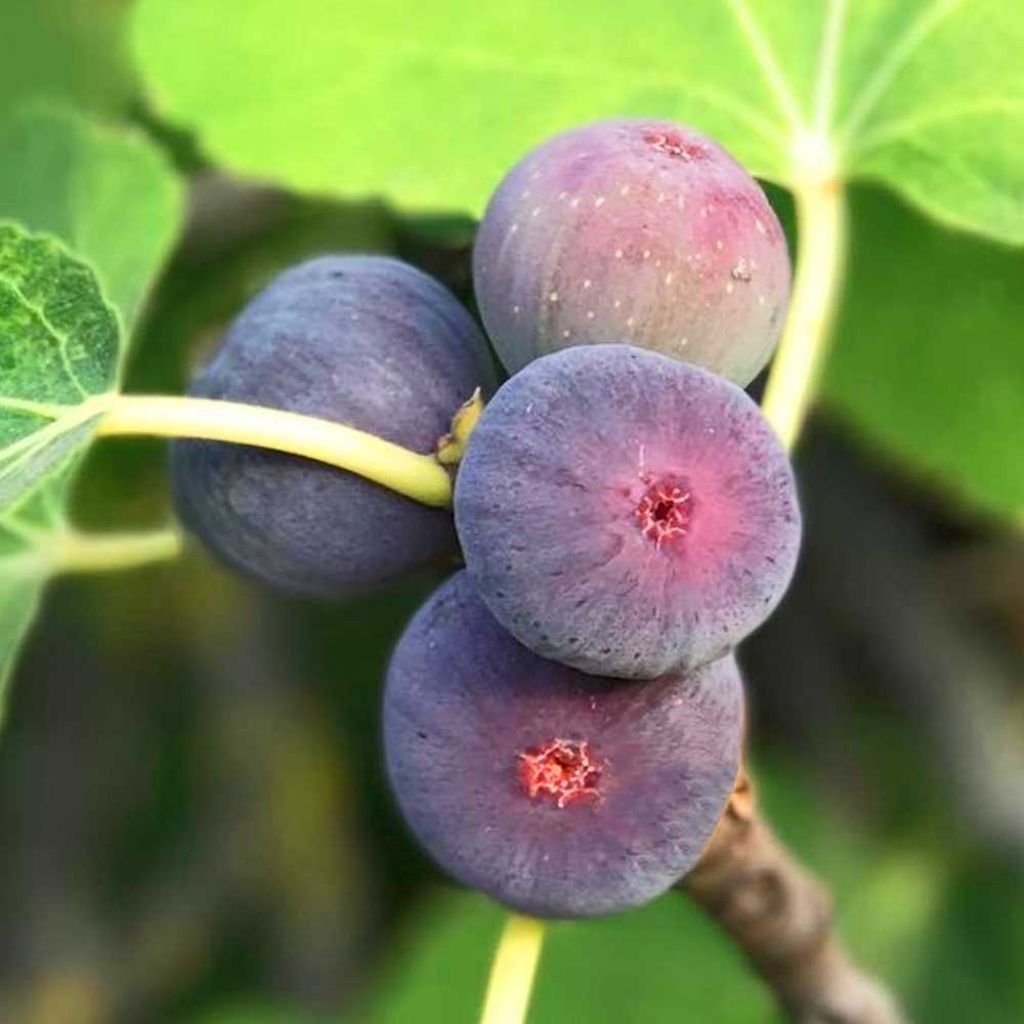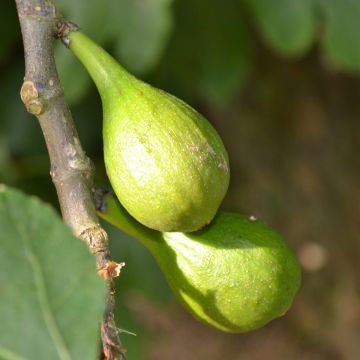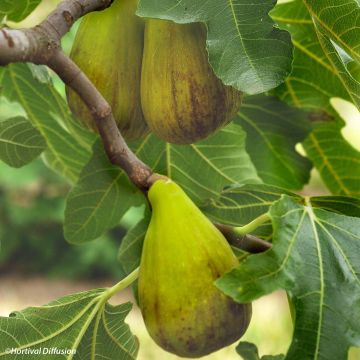

Ficus carica Figality


Ficus carica Figality
Ficus carica Figality
Ficus carica Figality 'Majoam'
Common Fig, Fig Tree
This item cannot be shipped to the selected country
Delivery charge from €5.90
Delivery charge from €5.90
Delivery charge from €5.90
Delivery to Corse prohibited
More information
Schedule delivery date,
and select date in basket
This plant carries a 6 months recovery warranty
More information
We guarantee the quality of our plants for a full growing cycle, and will replace at our expense any plant that fails to recover under normal climatic and planting conditions.
From €5.90 for pickup delivery and €6.90 for home delivery
Express home delivery from €8.90.
From €5.90 for pickup delivery and €6.90 for home delivery
Express home delivery from €8.90.
From €5.90 for pickup delivery and €6.90 for home delivery
Express home delivery from €8.90.
Delivery to Corse prohibited: UE law prohibits the import of this plant from mainland France to Corse as part of the fight against Xylella fastidiosa. Please accept our sincere apologies.
More information

Description
The 'Figality' Dwarf Fig Tree is a recent variety that has a remarkably compact habit, reaching only 1.50m (4ft 11in) in height and 1m (3ft 4in) in spread at maturity. It is perfect for container cultivation or small spaces. It produces abundant fruits of a good size, with a blue, almost black skin and red flesh that is sweet and aromatic. It is a self-fertile variety with good cold resistance. It bears fruit once a year, starting in early August. The Fig Tree is a deciduous, hardy tree that thrives in sunny locations. Plant in autumn/winter (or in spring for colder regions).
The Ficus carica 'Figality', sometimes known as 'Little Miss Figgy', is a variety discovered in 2010 by American Michael Nobles in his nursery in South Carolina, from a spontaneous mutation of the 'Rouge de Bordeaux' Fig Tree. Like its parent, it produces beautiful fruits with a blue, almost black skin and sweet, aromatic flesh. The fruits measure approximately 4cm (1.6in) in length and 5cm (2in) in diameter.
Among the Fig Tree varieties, there are:
- onecrop varieties, which produce a single harvest per year, quite abundant, in early autumn
- twocrop varieties, which bear fruit twice a year, producing figs called 'flower figs' in early summer, appearing on the previous year's wood, and autumn figs, developing on the branches of the current year.
The 'Figality' variety is a onecrop variety, bearing fruit from early August. The harvest will take place in stages, as the figs ripen. This variety is self-fertile and seedless, allowing for fruit production without fertilization. It does not need other fig trees and does not require the intervention of the fig wasp, the sole pollinating insect of the fig tree, which is too sensitive to survive in cold climates. Native to Turkey and Asia Minor, the Fig Tree (Ficus carica) belongs to the Moraceae family. 'Figality', with its small size, forms a vigorous deciduous dwarf tree with a rounded and branched habit, reaching a height of between 1.20 and 1.80m (5 ft 11in) and a spread of 0.90 to 1.20m (3ft 11in). The leaves are rough, dark green turning yellow in autumn, finely hairy, about 15cm (5.9in) long and 12cm (4.7in) wide, and have a long petiole. The surface is deeply divided into three to seven crenate lobes (most often five) of variable shape, with a velvety underside and prominent veins. The wood is soft and spongy, the bark is grey and smooth.
The Fig Tree is often considered one of the most beautiful fruit trees. Its unique foliage gives it an ornamental appearance. Plant the 'Figality' Fig Tree against a wall with a south or southwest exposure to protect it from cold during harsh winters, as a standalone specimen, integrated into a flower bed, or in a large pot on a sunny terrace. With its small size, it can be cultivated in colder regions, in a container that can be brought indoors when the temperature drops below -10°C (14°F).
Figs are used in sweet dishes (pies, clafoutis, compotes...) or savoury dishes in combination with goat cheese, dry-cured ham, or foie gras. After harvest, refrigeration is not recommended as it alters the flavours of the fig and the skin may suffer from humidity and condensation. The best way to enjoy them is fresh and eaten under the tree, which preserves their honey-like aroma.
Report an error about the product description
Ficus carica Figality in pictures




Plant habit
Fruit
Flowering
Foliage
Botanical data
Ficus
carica
Figality 'Majoam'
Moraceae
Common Fig, Fig Tree
Cultivar or hybrid
Other Fig trees
Planting and care
The Fig Tree adapts to all types of soils, even poor, rocky, and dry ones, but prefers deep, loose soils with a sufficiently high lime content. It requires a sunny exposure sheltered from strong winds. In summary, the fig tree likes to have its feet in the water and its head in the sun, especially during fruit ripening in summer. When planting, create a bed of gravel at the bottom of the planting hole and add a mixture of garden soil and mature compost or potting soil.
During the first two years after planting, it will be necessary to ensure that it does not dry out, especially during the summer period, as its root system, although capable of drawing water deeply from the soil, is not sufficiently developed. It is not well adapted to mountain climates, where its success is a challenge. It can be planted from November to the end of March, when not frosty. In colder regions, it is preferable to plant early in spring. It is a hardy tree, and even though the aboveground parts can be damaged by cold (young branches from -15-17°C (5-1.4°F), flower buds from -10-12°C (14-10.4°F)), it will regrow from the stump down to -20°C (-4°F).
The fig tree is not very susceptible to diseases and pests.
Planting period
Intended location
Care
-
, onOrder confirmed
Reply from on Promesse de fleurs
Berries
Haven't found what you were looking for?
Hardiness is the lowest winter temperature a plant can endure without suffering serious damage or even dying. However, hardiness is affected by location (a sheltered area, such as a patio), protection (winter cover) and soil type (hardiness is improved by well-drained soil).

Photo Sharing Terms & Conditions
In order to encourage gardeners to interact and share their experiences, Promesse de fleurs offers various media enabling content to be uploaded onto its Site - in particular via the ‘Photo sharing’ module.
The User agrees to refrain from:
- Posting any content that is illegal, prejudicial, insulting, racist, inciteful to hatred, revisionist, contrary to public decency, that infringes on privacy or on the privacy rights of third parties, in particular the publicity rights of persons and goods, intellectual property rights, or the right to privacy.
- Submitting content on behalf of a third party;
- Impersonate the identity of a third party and/or publish any personal information about a third party;
In general, the User undertakes to refrain from any unethical behaviour.
All Content (in particular text, comments, files, images, photos, videos, creative works, etc.), which may be subject to property or intellectual property rights, image or other private rights, shall remain the property of the User, subject to the limited rights granted by the terms of the licence granted by Promesse de fleurs as stated below. Users are at liberty to publish or not to publish such Content on the Site, notably via the ‘Photo Sharing’ facility, and accept that this Content shall be made public and freely accessible, notably on the Internet.
Users further acknowledge, undertake to have ,and guarantee that they hold all necessary rights and permissions to publish such material on the Site, in particular with regard to the legislation in force pertaining to any privacy, property, intellectual property, image, or contractual rights, or rights of any other nature. By publishing such Content on the Site, Users acknowledge accepting full liability as publishers of the Content within the meaning of the law, and grant Promesse de fleurs, free of charge, an inclusive, worldwide licence for the said Content for the entire duration of its publication, including all reproduction, representation, up/downloading, displaying, performing, transmission, and storage rights.
Users also grant permission for their name to be linked to the Content and accept that this link may not always be made available.
By engaging in posting material, Users consent to their Content becoming automatically accessible on the Internet, in particular on other sites and/or blogs and/or web pages of the Promesse de fleurs site, including in particular social pages and the Promesse de fleurs catalogue.
Users may secure the removal of entrusted content free of charge by issuing a simple request via our contact form.
The flowering period indicated on our website applies to countries and regions located in USDA zone 8 (France, the United Kingdom, Ireland, the Netherlands, etc.)
It will vary according to where you live:
- In zones 9 to 10 (Italy, Spain, Greece, etc.), flowering will occur about 2 to 4 weeks earlier.
- In zones 6 to 7 (Germany, Poland, Slovenia, and lower mountainous regions), flowering will be delayed by 2 to 3 weeks.
- In zone 5 (Central Europe, Scandinavia), blooming will be delayed by 3 to 5 weeks.
In temperate climates, pruning of spring-flowering shrubs (forsythia, spireas, etc.) should be done just after flowering.
Pruning of summer-flowering shrubs (Indian Lilac, Perovskia, etc.) can be done in winter or spring.
In cold regions as well as with frost-sensitive plants, avoid pruning too early when severe frosts may still occur.
The planting period indicated on our website applies to countries and regions located in USDA zone 8 (France, United Kingdom, Ireland, Netherlands).
It will vary according to where you live:
- In Mediterranean zones (Marseille, Madrid, Milan, etc.), autumn and winter are the best planting periods.
- In continental zones (Strasbourg, Munich, Vienna, etc.), delay planting by 2 to 3 weeks in spring and bring it forward by 2 to 4 weeks in autumn.
- In mountainous regions (the Alps, Pyrenees, Carpathians, etc.), it is best to plant in late spring (May-June) or late summer (August-September).
The harvesting period indicated on our website applies to countries and regions in USDA zone 8 (France, England, Ireland, the Netherlands).
In colder areas (Scandinavia, Poland, Austria...) fruit and vegetable harvests are likely to be delayed by 3-4 weeks.
In warmer areas (Italy, Spain, Greece, etc.), harvesting will probably take place earlier, depending on weather conditions.
The sowing periods indicated on our website apply to countries and regions within USDA Zone 8 (France, UK, Ireland, Netherlands).
In colder areas (Scandinavia, Poland, Austria...), delay any outdoor sowing by 3-4 weeks, or sow under glass.
In warmer climes (Italy, Spain, Greece, etc.), bring outdoor sowing forward by a few weeks.























































